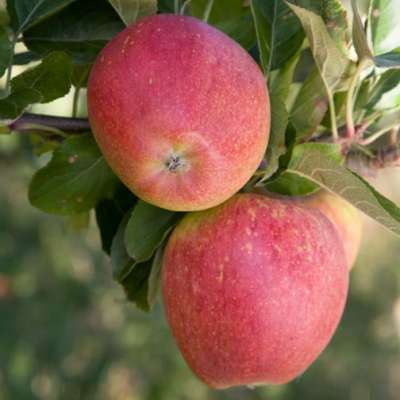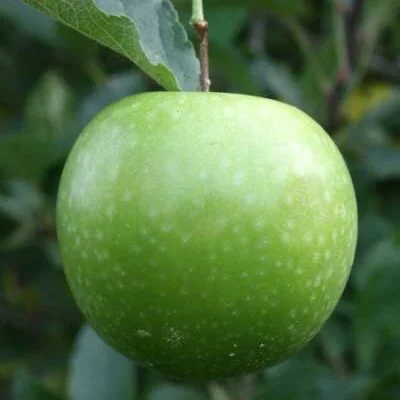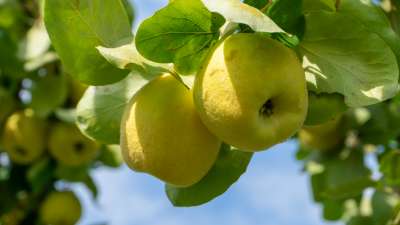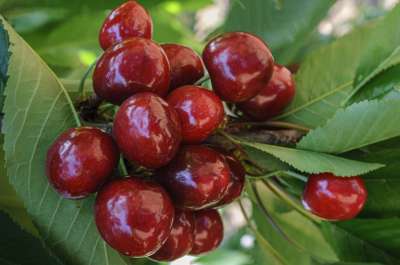Your basket is currently empty!
Each year about 75% of our fruit trees are supplied as bare-root. We grow them here on thnursery so these are genuine uk grown fruit trees. We only supply pot grown trees during the late Spring- summer, when it is out of season for bare rooted trees, it is a vehicle purely to enable the planting of trees to customers who want to get them in when bare root trees are out of season, for whatever reason. Although we have noticed there is growing demand for trees grown in pots and containers, and that the planting of trees during the summer has increased, it is the bare root form of tree that continues to be most favoured by professional and experienced growers.
Our bare root fruit trees for sale are uk grown and top quality! View our extensive range of fruit tree available to buy here.
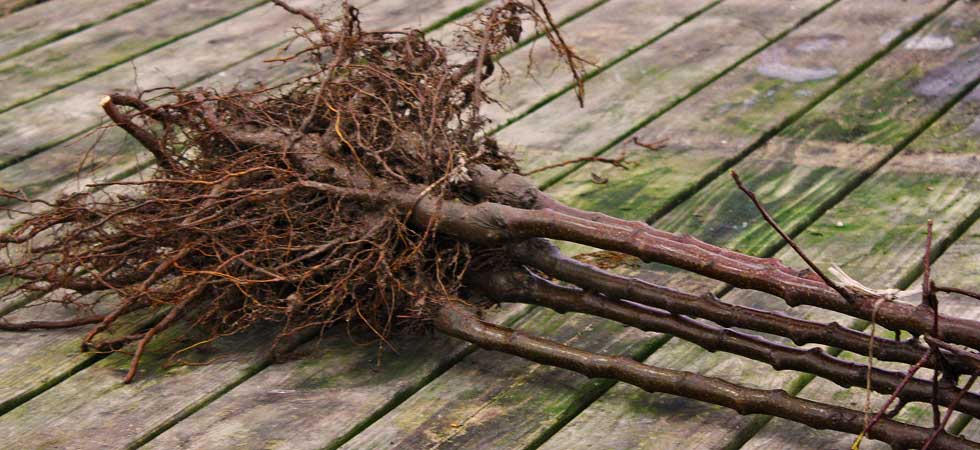
So what is a bare-root fruit tree?
Maybe as a beginner or novice grower you’re not really sure what it means? In simple terms, a tree that has been simply dug up [‘lifted’] direct from the ground or nursery bed is known as bare rooted, because it will have no compost or soil adhering to the roots. A container or pot grown tree arrives to you in a complete self contained unit with the roots already surrounded by, and rooted into, compost.
Maybe a pot grown fruit tree sounds like a better proposition? True, you can plant those at any time, during the Summer months even, and it’s already an established tree that you will probably buy with lots of promising leaves on it; you don’t have to plant it straight away either, it can wait around until you are ready for it, as long as you water it of course. Bare rooted trees are much more time-critical and benefit from immediate planting. So why does the latter continue to be much favoured?
The advantages of a bare root tree definitely outweigh those of a pot grown specimen. They are actually easier to establish and, because the tree will be dormant, it receives little shock after planting. A pot grown tree can go into serious melt-down after it is planted unless it is very kindly treated, whereas a dormant bare root tree is largely impervious to anything once it is planted. Bare root trees are always available in much greater variety and choice, whilst our own nursery offers for your convenience, trees in either form, some specialist fruit growing nurseries only offer their complete range in bare root form. Certainly your local garden centre will probably only offer trees in containers, at any time of year, and the selection will likely be pretty limited.
When to plant bare root fruit trees
Whereas pot grown trees can theoretically be planted any time of year, this is emphatically not true with bare root specimens which should only be planted from Autumn through to early spring. The exact timing is dependent on the seasons; the trees will need to be largely dormant to successfully be moved in this state, so sometimes the planting season can run on a little later than others depending on the arrival of true spring weather. Similarly the first liftings in the Autumn will be influenced by the arrival of the first significant frosts of the season, which will begin the process of leaf-fall.
Although some specialist believe all such planting should be completed before the sap rises and buds even begun to swell, we find that good results can be obtained as long as the trees aren’t actually breaking bud and coming into leaf.
Earlier planting rather than late is always beneficial as you will find that trees planted earlier in Autumn will actually start to make some fine new roots which provide good stead for when the Spring arrives. But if you’re reading this in March and have only just thought about planting don’t despair, good results from bare root trees can still be obtained.
The reason these trees can only be planted during these bleaker, colder months is because, unlike pot grown trees, the roots won’t have any immediate access to moisture, so if they were to be dug up and moved whilst in leaf, the foliage would quickly wither as the tree would not be able to replace lost moisture quickly enough to sustain growth. A tree in a pot has an established root ball with compost adhering to it’s many fibrous roots, so it can seamlessly continue growing and establishing when moved from it’s pot into the soil. However to do that, it will need constant watering for many weeks after planting.
A bare root fruit tree won’t need any watering after planting; the soil will already be moist enough at that time of year anyway. The only caution to sound is that if the first spring after planting is a dry one you might want to give your new tree[s] water as they will still be establishing.
Bare root trees can usually be obtained in all growing forms, be it vigorous or dwarfing trees, fan,m espalier or cordon, as maiden young trees or bush older trees, the format suits them all equally and it covers the full range of apple, pear, plum, gage, damson, cherry, quince, peach apricot and nectarine and nut trees as well. The only fruit tree that does not really suit it is the Mulberry which is virtually always sold as a pot grown tree and can be problematical re-establishing if it is not.
Treatment after receipt
It should be emphasised that bare root trees are not stable for long periods and need prompt attention once you have them. The packing methods that we use mean that you can keep the trees as they are for up to 7-10 days maximum, by placing the package in a shed or garage – but this is for our packing methods, trees from other sources may vary so check with your supplier if they haven’t been packaged for transport to quite the same standard. The key is to keep the trees frost free but cold, and definitely away from heat or warmth which may either dry them out or encourage them to start budding too early.
The trees also need to be kept frost free whilst they are out of the ground but this does not apply to when they are planted, once they are in the ground they are impervious to frost and cold.
If after a week or more you still can’t plant your trees, open the package and soak the roots for several hours, or overnight, in a bucket of water.
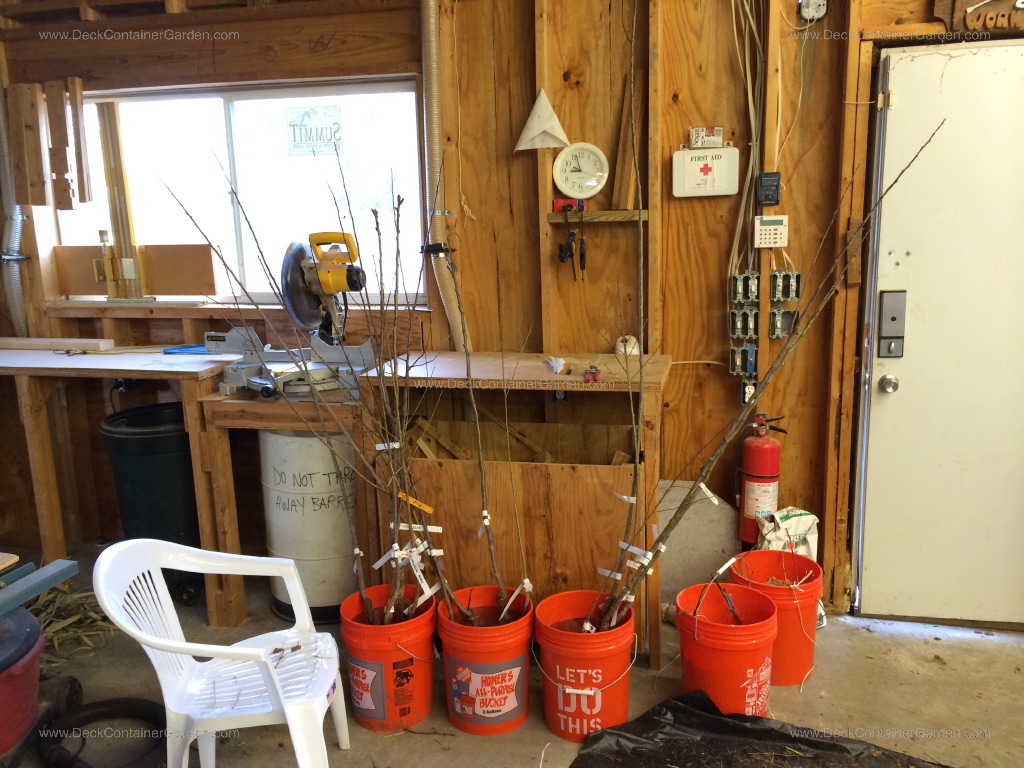
You will then need to deal with them properly, although it isn’t actually necessary to plant them in their final positions. A practice known as ‘healing in’ can conveniently take care of them. This involves digging a trench deep and wide enough to take the roots, laying the trees in said trench and covering over the roots with soil so they are completely covered but the tops and branches remain clear. Firm the soil down well; they can then stay like that until planting out which must be completed by early Spring for the reasons mentioned above.
An alternative measure you may find easier, and especially so for just one or two trees maybe, is simply put the roots in a large bucket or large pot and fill in with moistened compost or soil. Keep the trees in a sheltered outside place until planting can be done properly.
You will probably gather from the above instructions that the key here is to keep the roots moist at all times; if you allow them to dry out the tree may suffer or even fail completely.
Weather and planting conditions
Of course the main disadvantage with planting at this time of year is that weather conditions are often less than ideal! It may be too wet or too cold and often we are asked by customers whether it is ok to plant them out. Our response is always that if the soil is workable and you can, then do it. If the soil is too sloppy and wet to plant well, or it is so solid with frost or snow you simply can’t dig a hole, then of course delay and deal with the trees as described above.
But otherwise plant them, prompt planting is always an advantage. I cannot stress too highly that frost and cold temperatures will not harm them once they are in the ground and remember the trees will have been lifted from outside on the fields or nursery so when they arrive with you they are already hardened off and used to the cold, bare root trees are never supplied from greenhouses or enclosures.
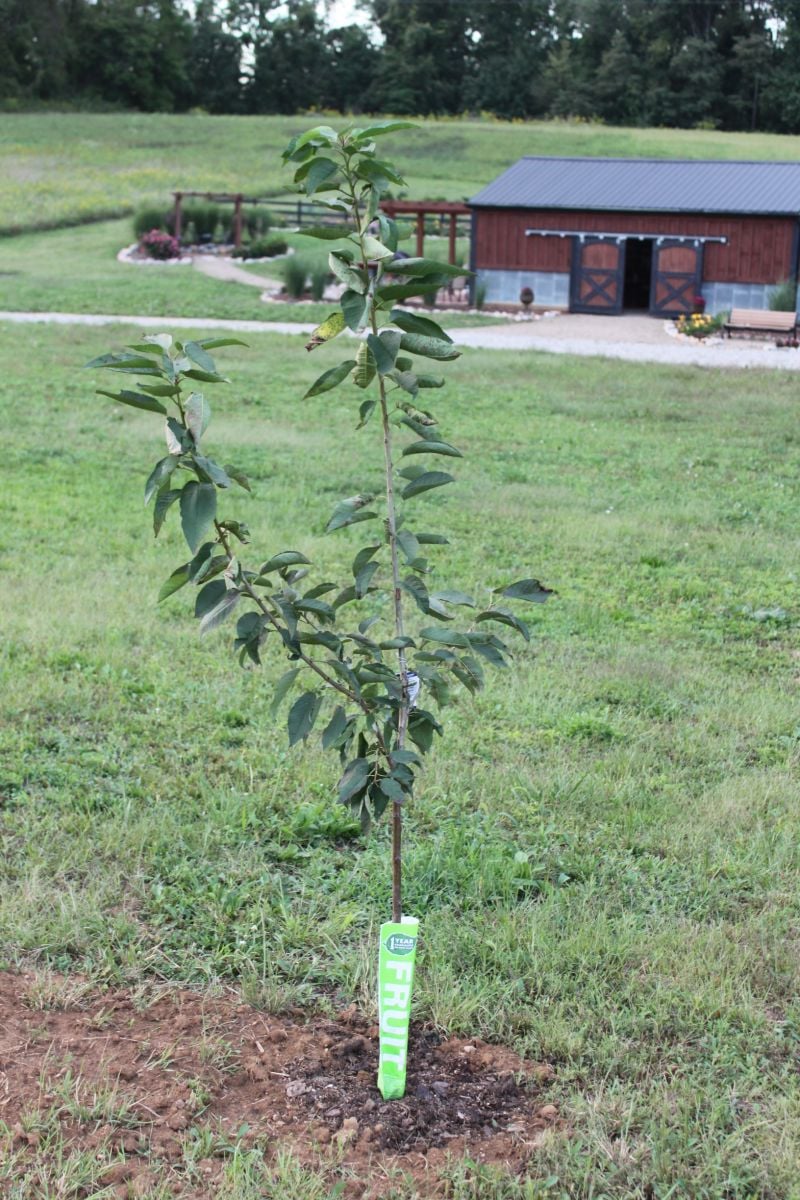
Watering, as mentioned before, is largely unnecessary with the planting of trees during the winter months. However watch the trees that first Spring, if it is a dry one or the trees start showing any signs of stress once they have leafed up, then be prepared to irrigate with a good puddling of water applied direct to the roots themselves. Allow the water to ‘sit’ in a puddle for a few seconds and then you know that enough has been applied for it to soak down to the roots beneath. This can continue until late Spring when sufficient new root growth should have been formed for the trees to support themselves.
Staking
A 2 x 2” stake driven about 18” into the ground is enough to support most trees. If is a small tree planted in a sheltered garden location then you might not need to stake but otherwise it is a necessity because it prevents wind rock. Rubber tree ties should be used to tether the main part of the trunk to the stake itself.
In country locations [and sometimes even in some larger gardens] protection must be given from rabbits and deer. Various tree guards are on the market, plastic spiral tree guards are the most inexpensive but they do not last forever, usually after a couple of winters frost and snow starts to perish them and they will need replacing. Other longer lasting, but more expensive methods are also available. Playing Simon Garfunkel’s ‘Bright Eyes’ during the night often discourages rabbits as well, for some reason.
Make sure if you are planting in grass to keep at least a few inches around the trunk clear of grass and weeds as the newly planted trees won’t welcome any additional competition for water and nutrients.
Basic pruning
Basic pruning encourages a good shape and earlier fruiting; trees that aren’t pruned may take longer to reach fruiting maturity and may fruit less heavily than trees that have been pruned properly., Refer to the main cultivation guides available on our website, that explain about the proper pruning of fruit trees.



